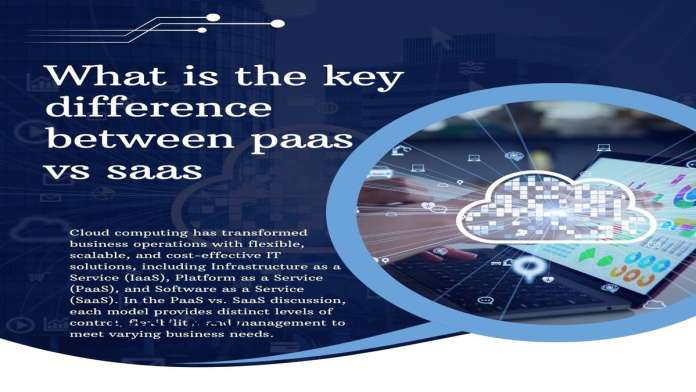Importance of Understanding Cloud Models
Understanding these cloud computing models is essential for making informed decisions about which services will best support your business objectives.
- IaaS provides the basic infrastructure, allowing for maximum control and customization.
- PaaS offers a platform for developing, testing, and deploying applications without worrying about the underlying hardware or operating systems.
- SaaS delivers ready-to-use software applications, eliminating the need for installation, maintenance, or management.
Choosing the Right Cloud Model
With the increasing demand for digital transformation, choosing the right cloud model can significantly impact your efficiency and productivity. For instance, startups might lean towards SaaS solutions to quickly get software tools running with minimal hassle, while established enterprises could benefit from PaaS to build and deploy custom applications tailored to their unique needs.
What’s Next?
In the following sections that follow, we will delve deeper into PaaS and SaaS models, discuss their key differences, and explore scenarios where each model excels. This will equip you with the knowledge to make the right choice for your organizational needs, whether you aim to develop new applications or optimize your existing software environments.
What is PaaS (Platform as a Service)?
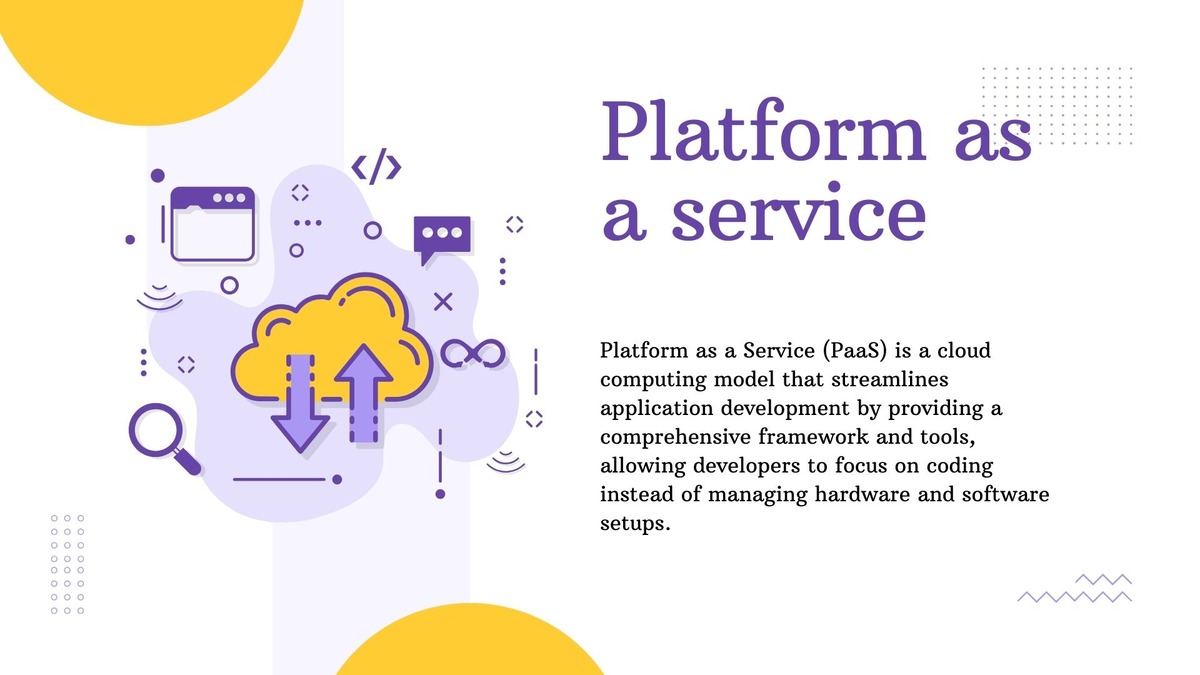
Platform as a Service (PaaS) is a cloud computing model that offers a comprehensive framework for developers to build, deploy, and manage applications. Unlike traditional software development environments that require extensive hardware and software setups, PaaS simplifies the process by providing cloud-based infrastructure and tools. This enables developers to focus more on coding and less on backend management.
Key Advantages of PaaS
One of the key advantages of PaaS is its ability to reduce the complexities and costs associated with provisioning servers, storage, networking, and databases. Users can quickly launch platforms and scale them according to their needs without worrying about infrastructure maintenance. With PaaS, you get a complete development and deployment environment in the cloud, with resources that can be tailored to your specific project requirements.
Comprehensive Development Tools
Moreover, PaaS includes valuable development tools, middleware, operating systems, and database management systems. Popular PaaS providers such as Google App Engine, Microsoft Azure, and Heroku offer a variety of services that support multiple programming languages, frameworks, and libraries. This versatility makes PaaS an excellent choice for diverse development projects, ranging from simple web applications to complex enterprise solutions.
In summary, PaaS simplifies the application development lifecycle. By offering a pre-configured environment, it lets developers focus on what they do best—writing code. This makes PaaS particularly appealing for startups, agile teams, and large enterprises looking to innovate faster and more efficiently.
Incorporating **PaaS advantages** like cost-efficiency, scalability, and resource optimization into your development strategy can significantly enhance productivity and drive innovation.
What is SaaS (Software as a Service)?
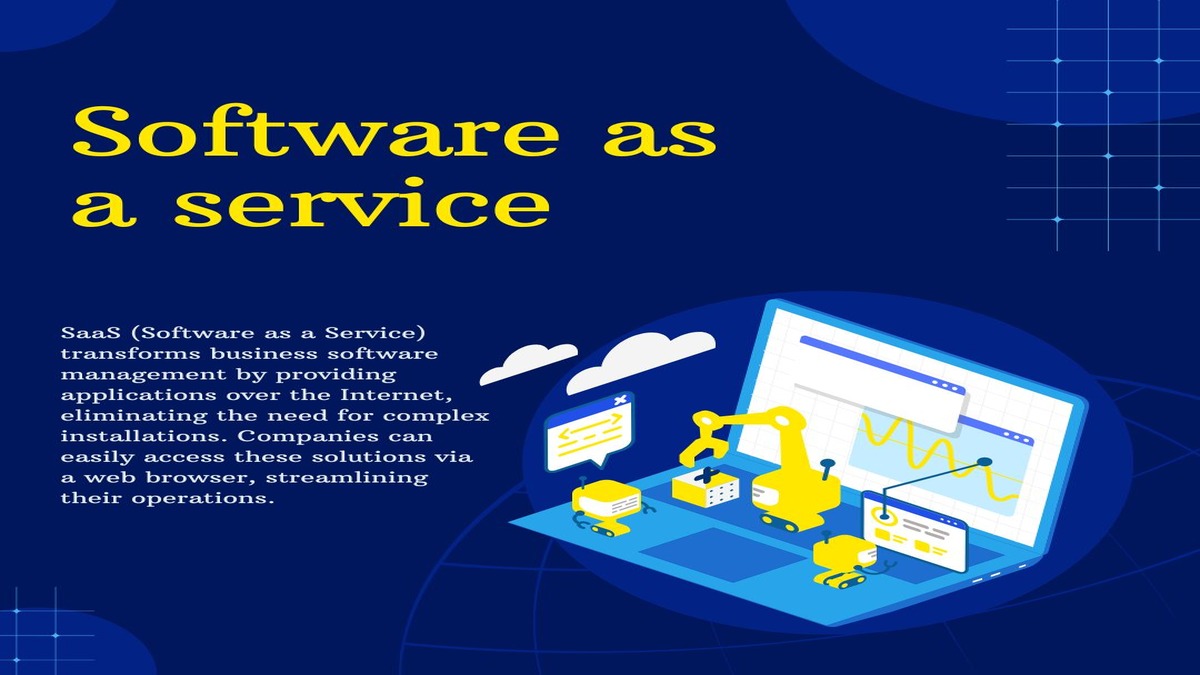
SaaS, or Software as a Service, revolutionizes how businesses handle software solutions by offering them over the Internet. With SaaS, companies no longer need to install or maintain complex software systems on their own hardware. Instead, they can access applications via a web browser, simplifying the entire process.
Easy to Use:
One of the main SaaS benefits is its ease of use. Users can quickly implement SaaS applications without the need for extensive IT infrastructure. Popular examples include Salesforce for customer relationship management, Google Workspace for productivity tools, and Slack for team collaboration. These applications are ready-to-use and often come with automatic updates, ensuring that businesses always have access to the latest features without additional costs or technical challenges.
Scalability:
Scalability is another significant advantage of SaaS. Since the software is hosted on the provider’s servers, it can easily scale up or down based on user demand. This is particularly beneficial for growing businesses or those with fluctuating needs, as they can adjust their usage without significant investments in new hardware or software licenses.
CyberSecurity:
Security is a crucial aspect where SaaS shines. Providers invest heavily in cybersecurity measures to protect data, which can be a complex and costly endeavor for individual companies. By leveraging SaaS solutions, businesses benefit from high-level security protocols without the associated investments and maintenance headaches.
Cost-Effectiveness:
Cost-effectiveness is a compelling reason for adopting SaaS. It eliminates upfront costs for software and hardware, shifting expenses to a subscription-based model. This makes budgeting more predictable and helps smaller businesses access sophisticated software solutions previously only available to large enterprises.
In summary, SaaS offers a streamlined, scalable, and secure way to access state-of-the-art software solutions, making it an attractive option for businesses of all sizes looking to optimize their operations and reduce overhead costs.
Key Differences Between PaaS and SaaS

Understanding the key differences between PaaS (Platform as a Service) and SaaS (Software as a Service) can help you make informed decisions for your business.
PaaS (Platform as a Service):
First, let’s discuss the primary focus of each model. PaaS is tailored for developers. It offers a comprehensive framework to build, deploy, and manage applications. This platform provides various tools like middleware, development frameworks, and databases, making it easier for developers to focus on writing code rather than managing infrastructure.
SaaS (Software as a Service):
In contrast, SaaS is end-user focused. It delivers fully functional software applications over the internet. Think of tools you use daily, like Google Workspace or Salesforce. Users can quickly access these applications through a web browser, eliminating the need for complex installations or manual updates.
Customization Capabilities
Another essential difference is customization.
1.PaaS (Platform as a Service): With PaaS, companies can build highly customized applications tailored to specific needs.
2. SaaS (Software as a Service): In comparison, SaaS solutions come as pre-packaged software, offering limited customization options but ensuring ease of use and fast deployment.
Scalability:
Scalability is also a crucial factor.
1.PaaS (Platform as a Service): PaaS platforms allow for easy scalability of applications, enabling developers to add new features or handle growing traffic with minimal hassle.
- SaaS (Software as a Service): On the other hand, SaaS providers manage scalability behind the scenes, ensuring that users experience seamless performance without having to tweak technical settings.
Cost Considerations:
Cost considerations also vary between the two.
1.PaaS (Platform as a Service): PaaS typically involves costs related to infrastructure and platform services, often on a pay-as-you-go basis.
- SaaS (Software as a Service): SaaS, however, usually operates on a subscription model, providing predictable and straightforward pricing for businesses.
Understanding these distinctions—developer focus vs. end-user, customization capability vs. ease of use, and different scalability approaches—can guide you in choosing the right cloud computing model for your specific needs. Whether it’s the robust environment of PaaS or the convenience of SaaS, knowing what each offers will help you make the best decision.
Use Cases: When to Choose PaaS vs. SaaS
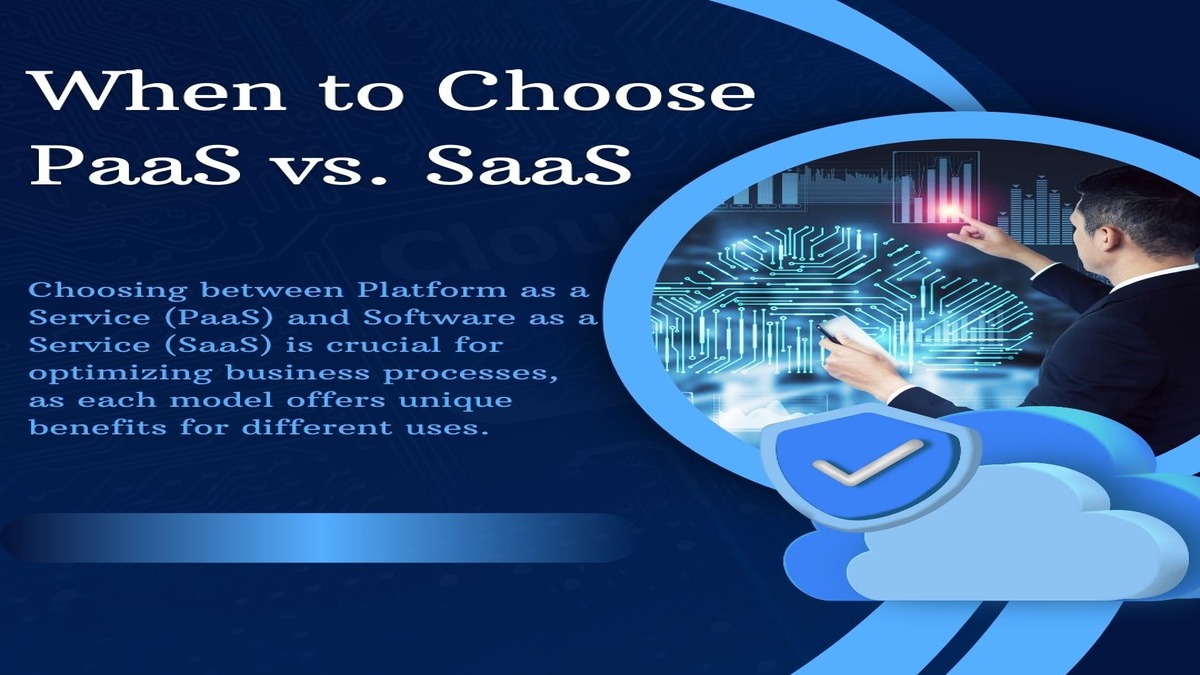
Navigating the cloud computing landscape can be tricky, especially when deciding between Platform as a Service (PaaS) and Software as a Service (SaaS). Each model offers unique benefits tailored to different uses, making the choice critical for optimizing your business processes.
When to Choose PaaS
PaaS is ideal for developers who need a robust environment to build, test, and deploy applications. This cloud computing model provides essential tools, libraries, and frameworks, reducing the complexity of app development. If you aim for customized applications or require specific programming languages and development environments, PaaS is the way to go. Startups, for example, might leverage PaaS to quickly develop software without worrying about underlying infrastructure, thus accelerating time-to-market.
When to Choose SaaS
On the other hand, SaaS is perfect for businesses looking for ready-to-use software solutions. SaaS applications are hosted in the cloud and accessed via the internet, making them easy to deploy across the organization. For instance, a CRM like Salesforce or a communication tool like Slack falls under SaaS. These solutions are great for companies that need cost-effective, scalable software without the hassles of maintenance and updates, which are managed by the vendor.
Key Points to Consider
- Cost and Maintenance: If you want to minimize upfront costs and avoid intricate maintenance activities, SaaS offers a simple solution.
- Customization and Control: Choose PaaS if you need more control over the software development life cycle and require extensive customization.
- Deployment Speed: SaaS provides faster deployment since you are using pre-built applications.
In essence, the choice between PaaS and SaaS hinges on your specific needs. Whether it’s development agility you seek with PaaS or operational simplicity with SaaS, understanding these use cases will help make an informed decision best suited for your business.
Conclusion: Making the Right Choice for Your Needs
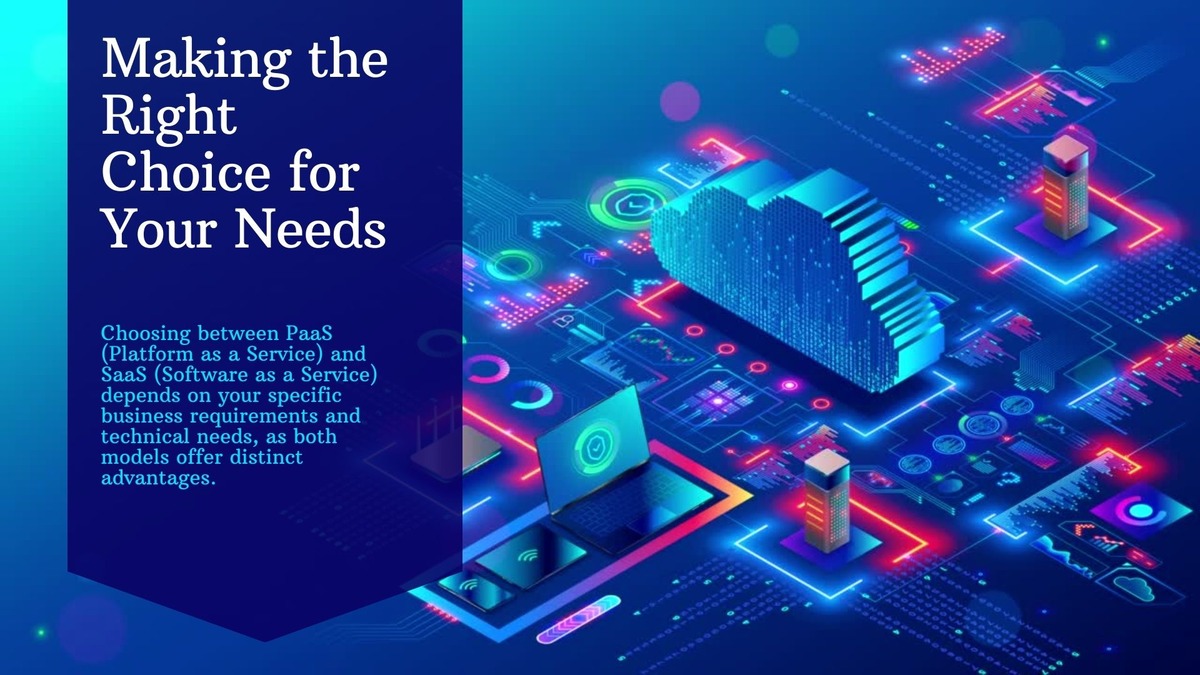
Choosing between PaaS (Platform as a Service) and SaaS (Software as a Service) boils down to your unique business requirements and technical needs. Both cloud computing models offer significant advantages, but they cater to different aspects of your business operations.
Advantages of PaaS
PaaS platforms are ideal if you’re looking to build, develop, and run applications without worrying about underlying infrastructure. With PaaS, you can leverage a robust environment that supports app development, testing, and deployment. This eliminates the hassles of hardware management and allows your team to focus solely on writing code and improving functionalities. PaaS advantages include greater flexibility, control over applications, and faster time-to-market for new products.
Benefits of SaaS
On the other hand, SaaS solutions are perfect for businesses that need ready-to-use software with minimal setup. SaaS benefits are clear: there’s no need for installations, updates, or maintenance. You just subscribe and start using the software. Applications like CRM, HR management, and email marketing platforms are commonly delivered as SaaS, offering out-of-the-box solutions that are easy to scale. SaaS platforms take care of everything, including security, backups, and compliance, freeing up your IT team to focus on more strategic initiatives.
Making Your Decision
If you need extensive development and customization capabilities, PaaS might be your best bet. If you require seamless, hassle-free software solutions with easy scalability, SaaS is the way to go. By understanding your specific needs and the strengths of each cloud computing model, you can make an informed decision that will best serve your business objectives.
Read More: Top 10 Popular SaaS Marketing Blogs in 2024

